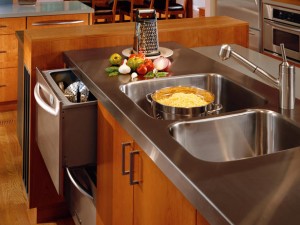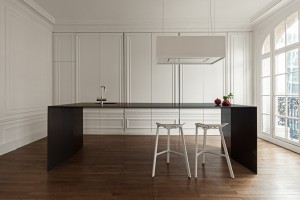As 2014 approaches its end, I
would like to solemnly thank all of our readers and clients for another
successful year. I know many of you have also been experiencing success because
of the commitment you carry for your clients and the countertop industry. In
addition, I would like to say hello to all of our new readers and hope that you
are all as content with the thousands of hours you have poured into your
businesses over the course of the year. We hope we have helped and will
continue to help you meet the demands placed before you.
That being said, the end of the
year is the best time to consider where your business is going into the next.
Perhaps you are content with the niche you have carved in your market, but if
you are like us, you have your sights set on continued expansion. Even if you
can't make a major leap forward in 2015, there are still many options available
to grow your business in small ways that will put you in a better position.
The first step to expansion is to
think about the possibility and attempt to predict where the market is open.
You will want to take a look at the organizational structure of your business
and the resources you have available to you. How will they support your plan or
vision? You will also want to observe the market from a vantage point that
allows you to see the big picture and the forces driving it.
The next step to take in
expanding your business is to develop a marketing plan. A solid marketing
strategy is the best tool you have in growing your business. When you
understand your target market and your competition, you will be able to put
yourself in a better position. Some companies will have the resources to
accomplish the development of a plan in house, but others may want to consider
hiring outside help.
After you develop a plan, it must
be maintained, at a bare minimum, on an annual basis. One aspect of your plan
should be to consider all of the resources available to you, and to consider
how technology has affected traditional marketing. Nielsen, one of the leading
research companies in the world, predicts that by 2015, Internet advertising
will comprise a full quarter of the market, which is up from 16 percent just
four short years ago.
If you have a decent Internet
presence, then good for you! You are doing something right that will play big
in the future. You should consider Internet advertising to reach your potential
customers and gain trackable and measurable leads. If you do not have a strong
Internet presence or no web activity at all, DO SOMETHING NOW. If you do
nothing else, make sure you have a website! Even a basic site that shows your
products and services, contact information and some photos of your work can make
a big difference. And. If you do not use social media, START NOW. Even if you
have one of your employees spend a few minutes a day posting on a few social
media feeds for your company, it can (and likely will) make a difference.
Whatever your plan is for 2015,
the first step is having one. If there is anything we can do to help you expand
or better your business, let us know. It is our goal to provide you with the
information you need, and we also have Internet expertise on staff that may be
able to assist you in getting one step closer to your ultimate vision. Good
luck in 2015.
Sincerely,
Brian Jones, Editor
www.CountertopResource.com info@countertopresource.com

